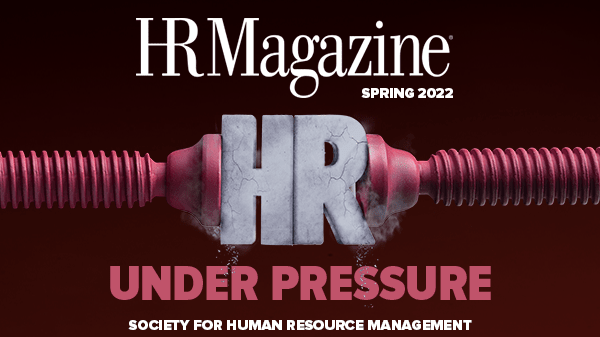'Unions Are Not the Enemy of HR'
As an HR professional and a proud union member, I was a bit offended by the anti-union article by Jonathan A. Segal in the spring 2022 issue of HR Magazine. I certainly respect the author's right to promote his views and SHRM to publish them. I would, however, hope that you will give equal time to both a neutral position and a pro-union position.
Those of us who work in government work in a heavily union environment. While my opinion is not universally held, I know that there are many advantages to working with an organized workforce, including compliance mechanisms for occupational health and safety, benefits administration, training, and employee development. In addition, quality union contracts can lead to greater employee engagement, as workers empowered with a stake in their workplaces will work harder.
Unions are not the enemy of HR. Most of the benefits workers can claim today are there because unions fought for them. These include not only health insurance and paid time off, but also the concept of weekends off, an eight-hour workday and child-labor protections.
John Magisano
Learning and training lead
New York City Office of Technology & Innovation
Member, New York City Organization of Staff Analysts
'The Rights of Employers'
Thank you, Mr. Magisano, for your thoughtful letter. I appreciate the diversity in perspective. The focus of my article was the rights of employers in the private sector under the National Labor Relations Act. While employees have a right to unionize, employers also have the right to share their views on why they oppose unionization so long as they don't engage in threats, interrogations, and other objectionable or unlawful conduct.
At least in the private sector, most employers expect their HR professionals who are in a supervisory or management capacity to engage in lawful means to help the company retain its right to work directly with employees without a union. Some HR professionals don't realize this, and that may create problems for them and their employers. For example, supervisors and managers may run afoul of the National Labor Relations Act if they help a union organize. Indeed, if a supervisor or manager supports a union, such support may violate section 8(a)(2) of the National Labor Relations Act.
Of course, where there is a union, an employer—whether in the public or private sector—should work cooperatively with it. In all cases, the work of union and nonunion employees should be valued and appreciated.
Jonathan A. Segal
Partner
Duane Morris
Philadelphia
Editor's Note: The Legal Trends article written by attorney Jonathan A. Segal in HR Magazine's spring issue was intended to address questions that many HR professionals have about what steps they can lawfully take to respond to unionization efforts. Whether HR adopts the outlined steps will depend on the employer's stance on unionization, among other employee relations considerations.
'More Public-Sector Coverage'
I really enjoy reading this magazine, and I'm especially glad it is still in print form! Sometimes the articles appear to be geared more toward private-sector employers. The article in the spring 2022 issue about how HR can work effectively with CFOs was awesome, but it's difficult to implement in government, and I'll speak for my agency, a state-funded university. Can someone write an article on how to navigate red tape and government bureaucracy to accomplish the outcomes mentioned in that article?
Pamela Pratt-Trent
Benefits manager
Tennessee State University
Nashville, Tenn.
'The True Driver of Increasing Budgets is the Labor Shortage'
I was disappointed to see “Rising Inflation Prompts Pay Hikes” as the headline for an article on rising pay increase budgets in the spring 2022 issue of HR Magazine. I would argue that while inflation influences worker behavior, the true driver of increasing budgets is the labor shortage. The cost of labor is increasing because of supply and demand. Inflation has been relatively low (less than 3%) for the past decade, yet 3% has been a typical salary increase budget in the U.S. for 10 years. If the cost of living was the primary driver of employee pay, we’d pay everyone the same amount based on where they live. That isn’t how the labor market works. We pay more for skills in short supply and less for talent that is readily available. In the article, the experts quoted from WTW and Grant Thornton both discuss attracting and retaining talent, not inflation. A better headline would have been “Talent Scarcity Prompts Pay Hikes."
Anne Thomas, CCP, CBP, GPHR
Sr Director - Global Compensation & Benefits
W.R. Grace & Co.
Columbia, Md.
Advertisement
An organization run by AI is not a futuristic concept. Such technology is already a part of many workplaces and will continue to shape the labor market and HR. Here's how employers and employees can successfully manage generative AI and other AI-powered systems.
Advertisement



